Multiple Choice
Identify the
choice that best completes the statement or answers the question.
|
|
|
1.
|
Accuracy is judged by
a. | how close a value is to the true value. | b. | the precision of the
tool used for measurement. | c. | the reputation of the
scientist. | d. | None of the above |
|
|
|
2.
|
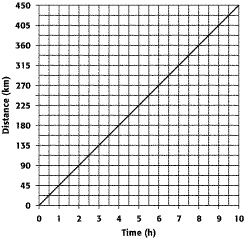 According to the graph above, how long does
it take this car to travel 270 kilometers? a. | 6 hours | c. | 12 hours | b. | 9 hours | d. | 15 hours |
|
|
|
3.
|
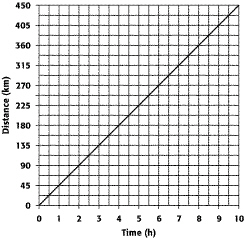 According to the graph above, what is the
dependent variable? a. | Distance (km) | c. | Cannot be determined | b. | Time (h) | d. | Speed |
|
|
|
4.
|
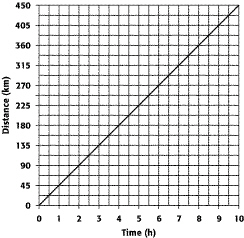 According to the graph above, what is the
independent variable? a. | Distance (km) | c. | Cannot be determined | b. | Time (h) | d. | Speed |
|
|
|
5.
|
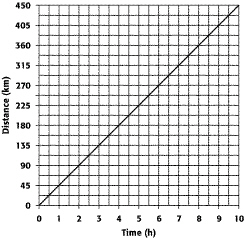 According to the graph above, what does the
slope indicate? a. | time/distance = speed | c. | Cannot be
determined | b. | distance/time = speed | d. | distance/time = acceleration |
|
|
|
6.
|
How many significant figures are in 70,200?
|
|
|
7.
|
Which of the following shows 0.0000043 g?
a. | 4.3 ´ 107 g | c. | 4.3 ´ 10–6 g | b. | 4.3 ´
106 g | d. | 4.3 ´ 10–7 g |
|
|
|
8.
|
The main branches of natural science are
a. | physics and chemistry. | b. | biology, zoology, and
ecology. | c. | medicine and agriculture. | d. | life, physical, and Earth
science. |
|
|
|
9.
|
What do scientists who do pure science do?
a. | They look for ways to use scientific knowledge to solve problems. | b. | They develop new
uses for scientific knowledge. | c. | They do experiments to find out about the
world. | d. | They build faster and more powerful computers. |
|
|
|
10.
|
A scientific law is
a. | the same as a hypothesis. | b. | a description of a natural
event. | c. | an explanation of a scientific observation. | d. | the conclusion of a
scientific experiment. |
|
|
|
11.
|
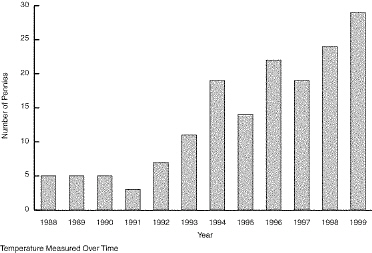
According to the graph, for which year was the smallest number of
pennies found?
|
|
|
12.
|
Scientists test a hypothesis by
a. | formulating questions. | c. | doing experiments. | b. | designing models. | d. | drawing
conclusions. |
|
|
|
13.
|
Maria is 123 centimeters tall. Her height in meters is
a. | 0.0123 m. | c. | 1.23 m. | b. | 0.123 m. | d. | 12.3 m. |
|
|
|
14.
|
Maria is 123 millimeters tall. Her height in meters is
a. | 0.0123 m. | c. | 1.23 m. | b. | 0.123 m. | d. | 12.3 m. |
|
|
|
15.
|
Which SI prefix means one one-hundredth (1/100)?
a. | nano- | c. | milli- | b. | micro- | d. | centi- |
|
|
|
16.
|
A loaf of bread weighs 1,362 g. The weight in kilograms is
a. | 1.362 kg. | c. | 0.1362 kg. | b. | 1,362 kg. | d. | 0.01362 kg. |
|
|
|
17.
|
The speed of light is approximately 3 ´
108 m/s. How would this be written in conventional notation?
a. | 300,000 m/s | c. | 30,000,000 m/s | b. | 3,000,000 m/s | d. | 300,000,000 m/s |
|
|
|
18.
|
You are asked to find the volume of a cube that is 2.5 cm high, 2.65 cm wide,
and 3.456 cm long. How many significant figures should you show in your answer?
|
|
|
19.
|
A measurement that is accurate is one that
a. | is as exact as possible. | b. | is close to the true value. | c. | contains at least
four significant figures. | d. | contains five decimal
places. |
|
|
|
20.
|
An important science skill is critical thinking. This means
a. | thinking logically to solve a problem. | b. | discovering the shortcomings of
others. | c. | knowing when something is very important. | d. | testing a hypothesis
during an experiment. |
|
|
|
21.
|
A tool used by physicists to smash atoms is a
a. | spectroscope. | c. | particle accelerator. | b. | stopwatch. | d. | radio telescope. |
|
|
|
22.
|
The two main branches of science are
a. | physics and chemistry. | c. | natural and physical science. | b. | natural and social
science. | d. | biological and
Earth science. |
|
|
|
23.
|
A scientific theory is an explanation that
a. | has been published in a journal or book. | b. | predicts what will
happen. | c. | has been tested by many observations. | d. | a scientist has tested with an
experiment. |
|
|
|
24.
|
For a scientific theory to be valid, it must allow you to
a. | perform experiments. | c. | form a hypothesis. | b. | obtain new results each
time. | d. | make
predictions. |
|
|
|
25.
|
A scientific model is a
a. | representation of a real event or object. | b. | small building used
to conduct experiments. | c. | mathematical statement of a
theory. | d. | new theory that takes the place of an incorrect one. |
|
|
|
26.
|
The SI unit for measuring temperature is the
a. | degree. | c. | mole. | b. | kelvin. | d. | ampere. |
|
|
|
27.
|
Which SI prefix means one million?
a. | kilo- | c. | giga- | b. | mega- | d. | milli- |
|
|
|
28.
|
The decimal equivalent of 10–2 is
|
|
|
29.
|
What is 78,900,000,000 expressed in scientific notation?
a. | 789 ´ 109 | c. | 7.89 ´ 109 | b. | 78.9 ´
108 | d. | 7.89 ´ 1010 |
|
|
|
30.
|
You are asked to find the area of a room that is 4.56 m long and 5.668 m wide.
How many significant figures should you show in your answer?
|
Matching
|
|
|
Match each item with the correct statement below. a. | science | f. | chemistry | b. | technology | g. | physics | c. | model | h. | geology | d. | scientific law | i. | meteorology | e. | scientific
theory | j. | ecology |
|
|
|
31.
|
the application of scientific knowledge for practical purposes
|
|
|
32.
|
a branch of Earth science that studies the physical nature and history of
Earth
|
|
|
33.
|
observing, studying, and experimenting to find the nature of things
|
|
|
34.
|
a branch of physical science that studies matter and its changes
|
|
|
35.
|
an explanation of how a natural process works
|
|
|
36.
|
a branch of Earth science that studies the atmosphere and the weather
|
|
|
37.
|
a branch of biology that studies the balance in nature
|
|
|
38.
|
a representation used to study an object or event
|
|
|
39.
|
a description of a process in nature that can be tested by repeated
experiments
|
|
|
40.
|
a branch of physical science that studies forces and energy
|